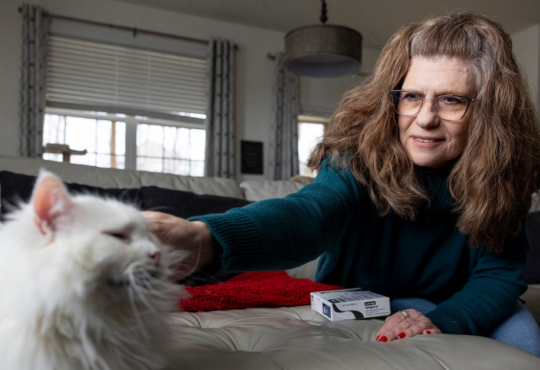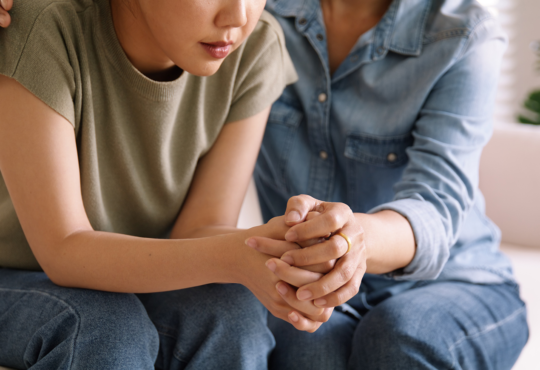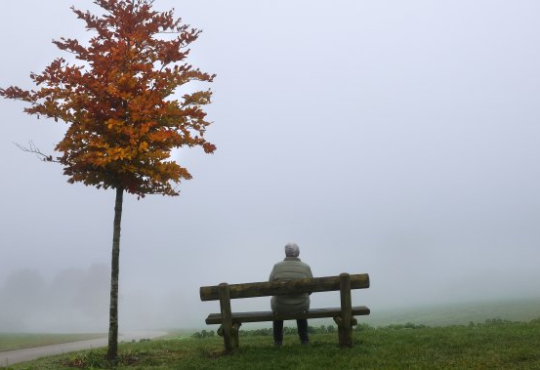
Chronic obstructive pulmonary disease (COPD) is a common lung disease causing restricted airflow and breathing problems. It is sometimes called emphysema or chronic bronchitis.
In people with COPD, the lungs can get damaged or clogged with phlegm. Symptoms include cough, sometimes with phlegm, difficulty breathing, wheezing and tiredness.
Smoking and air pollution are the most common causes of COPD. People with COPD are at higher risk of other health problems.
COPD is not curable but symptoms can improve if one avoids smoking and exposure to air pollution and gets vaccines to prevent infections. It can also be treated with medicines, oxygen and pulmonary rehabilitation.
The most common symptoms of COPD are difficulty breathing, chronic cough (sometimes with phlegm) and feeling tired.
COPD symptoms can get worse quickly. These are called flare-ups. These usually last for a few days and often require additional medicine.
People with COPD also have a higher risk for other health problems. These include:
Common symptoms of COPD develop from mid-life onwards. As COPD progresses, people find it more difficult to carry out their normal daily activities, often due to breathlessness. There may be a considerable financial burden due to limitation of workplace and home productivity, and costs of medical treatment.
COPD is sometimes called emphysema or chronic bronchitis. Emphysema usually refers to destruction of the tiny air sacs at the end of the airways in the lungs. Chronic bronchitis refers to a chronic cough with the production of phlegm resulting from inflammation in the airways. COPD and asthma share common symptoms (cough, wheeze and difficulty breathing) and people may have both conditions.
Several processes can cause the airways to become narrow and lead to COPD. There may be destruction of parts of the lung, mucus blocking the airways, and inflammation and swelling of the airway lining.
COPD develops gradually over time, often resulting from a combination of risk factors:
COPD should be suspected if a person has typical symptoms, and the diagnosis confirmed by a breathing test called spirometry, which measures how the lungs are working. In low- and middle-income countries, spirometry is often not available and so the diagnosis may be missed.
COPD isn’t curable, but it can get better by not smoking, avoiding air pollution and getting vaccines. It can be treated with medicines, oxygen and pulmonary rehabilitation.
There are several treatments available for COPD.
Inhaled medicines that open and reduce swelling in the airways are the main treatments.
Bronchodilator inhalers are the most important medicines for treating COPD. They relax the airways to keep them open.
Short-acting bronchodilators start to work in seconds and can last for 4–6 hours. These are often used during flare-ups.
Long-acting bronchodilators take longer to start working but last longer. These are taken daily and can be combined with inhaled steroids.
Other treatments may also be used:
Some inhalers open the airways and may be given regularly to prevent or reduce symptoms, and to relieve symptoms during acute flare-ups. Inhaled corticosteroids are sometimes given in combination with these to reduce inflammation in the lungs.
Inhalers must be taken using the correct technique, and in some cases with a spacer device to help deliver the medication into the airways more effectively. Access to inhalers is limited in many low- and middle-income countries; in 2021 salbutamol inhalers were generally available in public primary health care facilities in half of low- and low-middle income countries.
Flare-ups are often caused by a respiratory infection, and people may be given an antibiotic or steroid tablets in addition to inhaled or nebulised treatment as needed.
Lifestyle changes can help improve symptoms of COPD.
Quit smoking or vaping. This is the most important thing to do. Even if you have been smoking for many years, quitting can still help.
Avoid second-hand smoke or smoke from indoor cooking fires.
Stay physically active.
Protect yourself from lung infections:
People living with COPD must be given information about their condition, treatment and self-care to help them to stay as active and healthy as possible.
COPD is included in the WHO Global Action Plan for the Prevention and Control of Noncommunicable Diseases (NCDs) and the United Nations 2030 Agenda for Sustainable Development.
WHO is taking action to extend diagnosis of and treatment for COPD in a number of ways.
The WHO Package of Essential Noncommunicable Disease Interventions (PEN) was developed to help improve NCD management in primary health care in low-resource settings. PEN includes protocols for the assessment, diagnosis and management of chronic respiratory diseases (asthma and chronic obstructive pulmonary disease), and modules on healthy lifestyle counselling, including tobacco cessation and self-care.
Rehabilitation 2030 is a new strategic approach to prioritize and strengthen rehabilitation services in health systems. Pulmonary rehabilitation for COPD is included in the Package of Interventions for Rehabilitation, currently under development as part of this WHO initiative.
Reducing tobacco smoke exposure is important for both primary prevention of COPD and disease management. The Framework Convention on Tobacco Control is enabling progress in this area as are WHO initiatives such as MPOWER and mTobacco Cessation.
Further prevention activities include the WHO Clean Household Energy Solutions Toolkit (CHEST) to promote clean and safe interventions in the home and facilitate the design of policies that promote the adoption of clean household energy at local, programmatic and national levels.
The Global Alliance against Chronic Respiratory Diseases (GARD) contributes to WHO’s work to prevent and control chronic respiratory diseases. GARD is a voluntary alliance of national and international organizations and agencies from many countries committed to the vision of a world where all people breathe freely.
Related
Fact sheets







